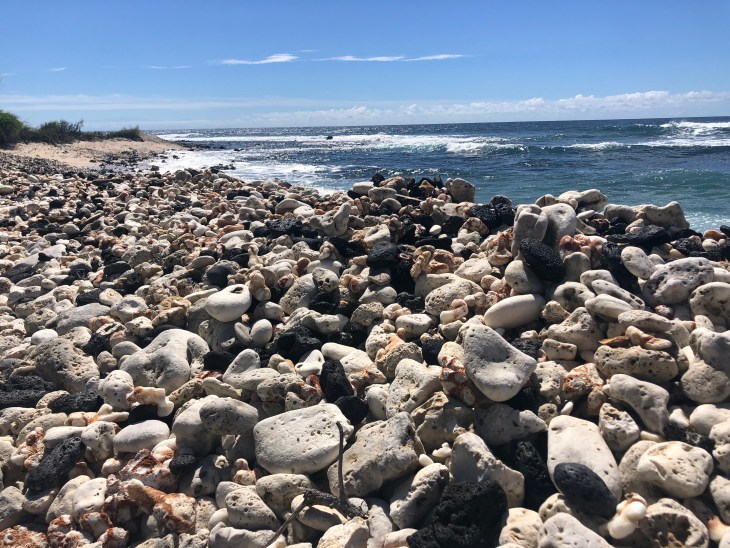Hawaii has strict Covid 19 regulations. Educate yourself before planning a trip. Learn more here.
Since international travel is out of the question at the moment, we have been working on a plan to continue our Grand Adventure without leaving the USA. Hawaii of course was at the top of our list and when they began welcoming guests again on October 15th, we were on one of the first planes to land that day. Maui now – open for business.

To Travel or Not to Travel
I can’t answer this question for anyone but myself. Nor should you judge me for my personal decisions. We, as highly skilled and practiced world travelers don’t take travel or the virus lightly. We have spent a lot of time considering what and how our future will look and how travel will continue to be a part of it.

Maui, and other places like it, where you can spend 16 or more hours a day outdoors, and easily social distance even if dining in a restaurant, is the kind of destination we are looking for. And since we have been to Maui so many times, it was easy for us to plan and execute a five week visit to a place we know well.
Maui Now – Open for Business
It’s like someone flipped a switch. The lights are on and Maui is back in business.
We arrived on October 15th to our 86 unit condo to find only two other units occupied. The first few days or even weeks it was so quiet. Beaches were empty, resorts were closed, very few stores and restaurants were open. Four weeks later, more than half of the 86 units are occupied. Nearly all the resorts are open. This week marked the opening of several major restaurants and attractions. In the coming weeks even more attractions will come back on line as Maui prepares for holiday crowds. Maui Now – Open for Business.

Lahaina and other shopping areas are starting to reopen with more than half the stores restocking and welcoming visitors. All the stores are being very diligent about staff and visitors wearing masks – a mask law is in effect throughout Maui County.

But not everything survived the seven month closure. Like many places around the USA, restaurants and shops have closed permanently. It was just too much.
Social Distancing Easy

Is it safe? For me, I probably wouldn’t choose to go to a luau, but I have felt very safe at the handful of restaurants (all locally owned) that we have visited and sat outside. I have felt very safe getting take-out too. Again, for me I probably would not choose to do a group snorkel tour, although they are in full-swing. But I feel safe golfing with my husband, hiking on nearly deserted trails, and running every morning in my neighborhood. I feel safe at the beach where it’s easy to distance. We actually have avoided the collective BBQ at our condo, only using it twice in a month, in an effort to not stand around with other people we don’t know. We usually have the pool to ourselves when we go there, as most people go to the beach instead.

Gathering with Friends

Completely unplanned but fun nonetheless, we happened to be here at the same time as several friends from back home. I have felt safe spending time with them in small groups. Each of them had to be tested before arriving, and each of them are practicing the same safe distancing and mask wearing rules we are. So we socialized with a hand full of dear friends and it made our visit all the more special.
A Real Vacation and Taking a Break

Being here for a month (with one more week to go) has felt like a real vacation for me. More relaxing than many of the places we travel. Taking a social media break was a wonderful cleanse and I really needed that. I’m so glad I was able to plan and schedule many blogs and book reviews before leaving home – leaving me time to just be present here in Maui.

We have spent a lot of time in the sun, although I have made a conscious effort to be more careful with my tanning (hard for me as my skin is a sun sponge). We have been just active enough and just lazy enough and just social enough and just the two of us enough to make it exactly right. Just enough as we head back to rain and dark and upcoming stress back home – where the Covid numbers are surging.
Where Do We Go From Here

We continue to work hard to stay healthy but of course who knows what the future holds. If Covid has taught me anything it’s that I am not in control. In fact I just read a line in a book that I loved – “If you want to make God laugh, tell him your plans.” That’s a quote from Anxious People by Fredrick Bachman. And ain’t that the truth. Making plans you have no idea if you can keep is the new way of life in the time of Covid.

So we head home November 20th and prepare to be with our family for the holidays, deal with some medical issues and prepare the house and ourselves once again for a departure. Mid January we head to Palm Desert where we plan to spend two months, Arizona for another month and Utah for a few weeks after that before heading back to Washington State in May.
These are our plans…hahahaha.
The Grand Adventure, a bit of a kink in the road, but it goes on.
We love it when you pin and share our blog. Aloha.
See this week’s top performing pin here.
Read our post My Favorite Thing to do on Each Hawaiian Island
Learn more about Covid rules for visiting Hawaii here.



































